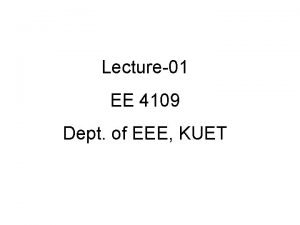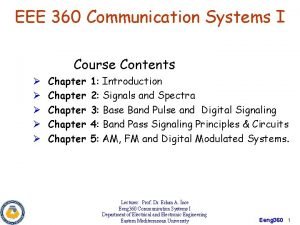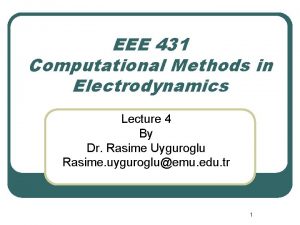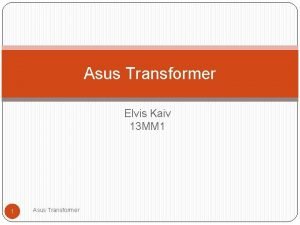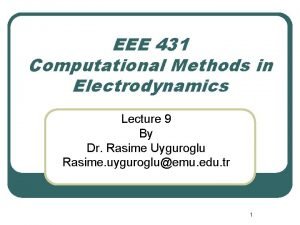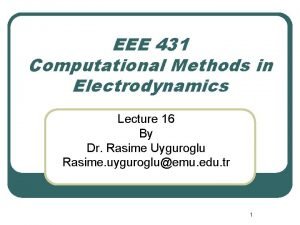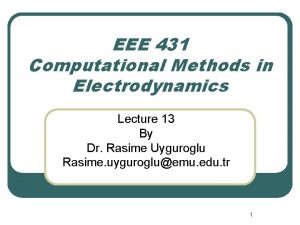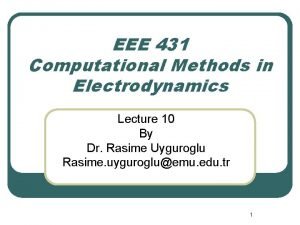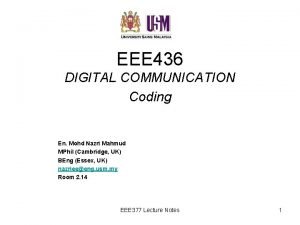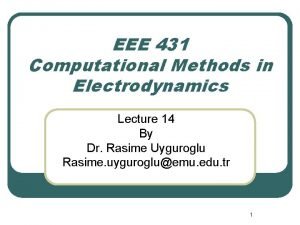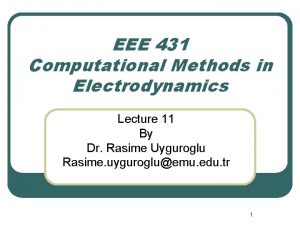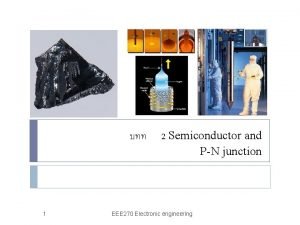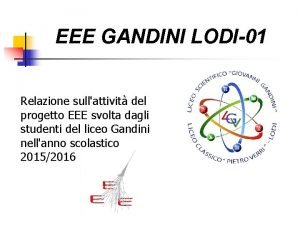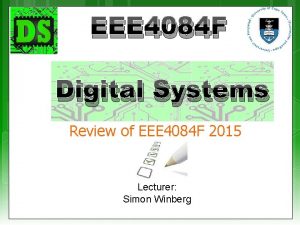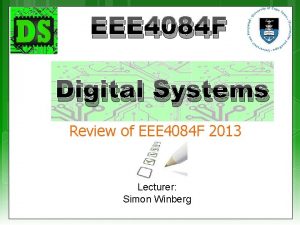Research Methodology Dr Unnikrishnan P C Professor EEE



























- Slides: 27

Research Methodology Dr. Unnikrishnan P. C. Professor, EEE

Module I q Research Design

Research Process Step IV. Design Research

Step IV. Design Research The research design refers to the overall strategy that you choose to integrate the different components of the study in a coherent and logical way, thereby, ensuring you will effectively address the research problem; it constitutes the blueprint for the collection, measurement, and analysis of data. Note that your research problem determines the type of design you should use, not the other way around!

IV. (a) Preparing the research design: • • • Research design is the conceptual structure within which research would be conducted. The function of research design is to provide complete guidelines for the collection of relevant information with minimal expenditure of time, effort and money. The following points are to be considered while preparing a research design for a particular research problem 1. Objectives of the research study 2. Method of data collection to be adopted 3. Source of information (Sample design) 4. Tool for data collection 5. Data analysis (Quantitative and qualitative)

IV(b). Determining sample design • A sample is segment of the population selected to represent the population as a whole. • Designing the sample calls for 3 decisions – The sample (who will be surveyed) – Sample size (how many people will be surveyed) – Sampling (how should the sample be chosen) • At random (probability sample) • Select people who are easier (non-probability sample) The needs of the research project will determine which method is most effective. . 6

Sample design ……. . • Samples can be either probability samples or nonprobability samples. • Probability samples are those based on simple random sampling, systematic sampling, stratified sampling, cluster/area sampling • non-probability samples are those based on convenience sampling, judgement sampling and quota sampling techniques.

Different Research Designs • Research Design in Case of Exploratory Research Studies • Research Design in Case of Descriptive and Diagnostic Research Studies • Research Design in Case of Hypothesis Testing Research Studies

Research Design in Case of Exploratory Research Studies The major emphasis in this research is on the discovery of ideas & insights Three methods a. The survey of concerning literature: Review hypothesis stated by earlier workers and deriving relevant hypothesis b. The experience survey: Survey people who have had practical experience with the problem

Research Design in Case of Exploratory Research Studies…… c. Analysis of ‘insight-simulating’ examples Suitable in areas where there is little experience available One can mention few examples such as reaction of strangers or marginal individuals, reaction of individual from different social strata

Research Design in Case of Descriptive and Diagnostic Research Studies Descriptive: Describing the characteristics of an individual or group Diagnostic: Frequency with which something occurs with something else • Formulate the objective • Design the method of data collection • Selecting the sample • Collecting the Data • Processing and analyzing Data • Reporting the findings

Research Design in Case of Hypothesis Testing Research Studies Generally known as experimental studies where researcher tests the casual relationships between variables. So the design research means design of experiments. Experimental design originated from agriculture operations, we still use (in a technical sense) several terms in agriculture (such as treatment, yield, plot, block etc. )

Important Experimental Designs a. Informal experimental design • Before and after without control design • After only with control design • Before & After with control Design b. Formal experimental design • Completely Random Design (C. R. Design) • Randomized Block Design (R. B. Design) • Latin Square Design (L. S. Design) • Factorial Designs

• Before and after without control design

• After only with control design

• Before and After with control design

Completely Randomized Design (C. R. Design) The Completely Randomized (CR) design randomly divides the experimental units into t groups of size n and randomly assigns a treatment to each group. Completely Randomized (CR) designs are used whenever the experimental units are homogeneous. Limitations: Individual differences among those conducting the treatments are not eliminated

(C. R. Design) Eg: Two group of students, one going for normal tuitions and another for specialized coaching classes This design is quite common in studies concerning behavioral sciences

Randomized Block Design (R. B. Design) Randomized Block Design differ from Completely randomized designs in that the experimental units are grouped into blocks according to known or Suspected variation which is isolated by the blocks. Eg: In agricultural data variation such as fertility, sand, and wind gradients, or age and litter of animals can be isolated by appropriate blocking

R. B. Design…… Therefore, within each block, the conditions are as homogeneous as possible, but between blocks, large differences may exist.

Advantages of R. B. Design 1. Complete flexibility. Can have any number of treatments and blocks. 2. Provides more accurate results than the completely randomized design due to grouping. 3. Relatively easy statistical analysis even with missing data. 4. Allows calculation of unbiased error for specific treatments.

Disadvantages of R. B. Design 1. Not suitable for large numbers of treatments because blocks become too large. 2. Not suitable when complete block contains considerable variability. 3. Interactions between block and treatment effects increase error.

R. B. Design …. • The randomized complete block design is one of the most widely used designs. If it will control the variation in a particular experiment, there is no need to use a more complex design.

Latin Square Design (L. S. Design) • Frequently used in agricultural research Eg: - An expt. Has to be made through with the effect of 5 different varieties of fertilizers on the yield of a certain crop is to be judged Here two major extraneous factors (Blocking Factors) such as the varying soil fertility and varying seed in different blocks must be taken into consideration.

L. S. Design ……. Fertility Level Seed Differences A B C D E A B C E A B C D In LSD, each fertilizer appear 5 times but is used only once in each row and each column. The two blocking factors are represented through rows and columns.

L. S. Design ……. Advantage: • It enables differences in blocking factors to be eliminated in comparison to the effects of different varieties of fertilizers on the yield of the crop. Disadvantages: • Interaction between treatment and blocking factors create considerable differences.


